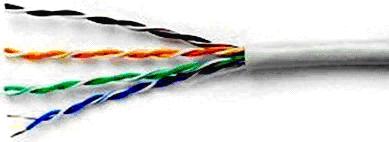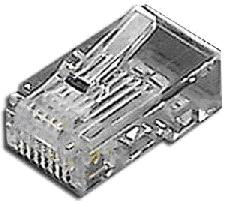
One of the oldest and still most common transmission media is twisted pair. As shown in Figure 15 a twisted pair consists of two insulated copper wires, typically about 1 mm thick. The wires are twisted together in a helical form. Twisting is done because two parallel wires constitute a fine antenna. When the wires are twisted, the waves from different twists cancel out, so the wire radiates less effectively.
Twisted pairs can be used for transmitting either analog or digital signals. The bandwidth depends on the thickness of the wire and the distance traveled, but several Mb/s can be achieved for a few kilometers in many cases. The frequency range of twisted-pair cables is approximately 0 to 1 MHz. Due to their adequate properties and low cost, twisted pairs are widely used and are likely to remain so for years to come.
Twisted pair cables are often shielded in attempt to prevent electromagnetic interference. Because the shielding is made of metal, it may also serve as a ground. However, usually a shielded or a screened twisted pair cable has a special grounding wire added called a drain wire. This shielding can be applied to individual pairs, or to the collection of pairs. When shielding is applied to the collection of pairs, this is referred to as screening. The shielding must be grounded for the shielding to work. In contrast to FTP (foiled twisted pair) and STP (shielded twisted pair) cabling, UTP (unshielded twisted pair) cable is not surrounded by any shielding. It is the primary wire type for telephone usage and computer networking, especially as patch cables. UTP comes in several varieties:
Nowdays Cat 5e and Cat 6 should be used.
 |
| Figure 15: UTP pairs (cable) |
UTP connector - The standard connector for UTP cabling is an RJ-45 connector. This is a plastic connector that looks like a large telephone-style connector (see Figure 16). A slot allows the RJ-45 to be inserted only one way. RJ stands for Registered Jack.
 |
| Figure 16: RJ-45 connector |
 |
 |
 |